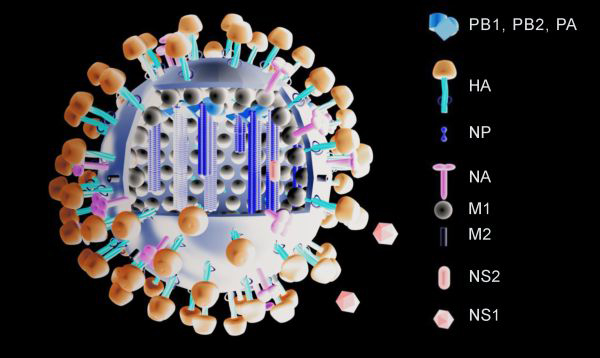Ebola virus is threatening to spread out of Africa. Zika virus is evolving and circulating in more than 50 countries. At this stage we must inform ourselves and others about viruses. The Hidden Life of the Cell does just that by illustrating a real scenario of adenovirus infection and while doing that introduces major cellular components. The documentary is quite successful in explaining the biology behind events. However, you might also want to see Inner Life of Cell and the Central Dogma to get yourselves more acquainted about the details of molecular interactions taking place inside living cells.
During 9 month period between November 2002 and July 2003, an outbreak of SARS virus in southern China’s Guangdong province caused a total of 8,273 cases and 775 deaths in multiple countries. Among them were many health workers who contracted the disease while trying to contain it. They are among the true heros of humanity. World Health Organization (WHO) has successfully managed to contain SARS virus. An RFID-tag study has shown that nurses are the most vulnerable and transmissive group. Design of treatment facilities by Medecins Sans Frontieres (Doctors Without Borders) reflects this concern.
Diseases struck humanity many times in the past and with increasing connectivity of human populations it will continue to hit again in the future. Informing and educating public about how viruses infect our cells is crucial to convey protective powers of vaccines. Vaccine awareness is especially important to prevent disease spread by generating herd immunity.
As Larry Brilliant of the WHO that lead the smallpox eradication program between 1973-1976 outlines, the most effective way of fighting a disease is “early detection, early response”. There are anti-viral vaccines such as Tamiflu and Relenza but stockpiling vaccines is not the proper way. These anti-virals should be used to protect health service personnel. The search for effectively curing viral infections continue and DRACO is one of the most promising technique.
At this point, we should also mention the movie Contagion which has done a good job of depicting a rather probable scenario of a viral outbreak largely based on the SARS outbreak of 2003.
“Early detection, early response.” – Larry Brilliant
Now there are highly intelligent computer simulations that can predict the possible ways of spread of diseases and can guide health personel to counteract which fits into the motto of Larry Brilliant.
The Hidden Life of the Cell provides an outline of major molecular events such as the Central Dogma and structures of proteins enzymes and cellular skeleton. It builds a successful narrative over previous animations.
What this documentary shows quite clearly but explains only superficially as “keys” is perhaps the most important piece of knowledge for public understanding of viral diseases. What should we understand from the letters and numbers when we hear viral names such as H5N1 (bird flu)? H means Hemaglutinins one of the protein keys that facilitates virus to bind on the cells that will be infected. So far we discovered 18 different Hemaglutinins. N means Neuraminidase (yes it’s an enzyme) which releases virus out of infected cells to spread into other cells. Check out HA and NA structures shown below:
The documentary introduces multiple lines of cellular defenses including endosomes (“sorting stations” where viral caps are digested in acid), antibodies (that insulate key proteins on virus surfaces and tag foreign bodies for destruction) and TRIM21 (the molecule alerts and attracts infamous protein shredding enzymes proteosomes)
It also touches briefly on the endosymbiotic theory that explains how organelles such as mitochondria and chloroplast evolved to carry eukaryotic cells to new levels and also talks about co-evolution (arms-race) between viruses and host cells.
You may find an episode of BBC’s Crowd Science program discussing the origin of viruses informative. If you are interested in learning more about molecular structures in living bodies you can find more under molecular nature category.
Here’s another brief take of the viral infection story by the NPR:



17 Comments
I love this website. This video really helps me with my cell work in class. Nice work.
Thanks! BBC really does a great job in public outreach with such documentaries.
It would be interested to see what a cell does when it is attacked by a scalpel or bruised from a fall or from a burn.
That was the coolest animation i had ever seen. Now all we need to see is samonella infection vs white blood cell or maybe parasite or fungus on molecular scale. That would be even cooler 🙂 Mononucleosis or an illness that infects WBC’s would be interesting to learn about. Anyways, thanks BBC. I always love watching this video.
Agreed! It would also be cool to visualize how plants defend themselves against pathogens and repair tissues after wound.
My 5 year old saw this on HULU, but unfortunately this is no longer there. Where may I buy a video of this (The Hidden Life Of The Cell)? How much would it cost in American dollars?
Thank you for such an amazing, and educational, video!